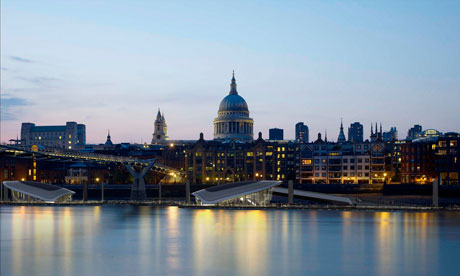Meet Me at the Plaza
By JEROLD S. KAYDEN
Published: October 19, 2011
An unintended but potentially significant benefit emerging from the Occupy Wall Street movement is the spotlight that the protesters camped out in Zuccotti Park have cast on the city’s privately owned public spaces.
Since 1961, the City Planning Commission has used zoning laws to give developers the right to build over 20 million square feet of extra residential and office floor space in return for providing more than 500 public plazas, arcades and indoor spaces. On paper, it reads like a great deal that, at little cost to the city, has given it enough additional public space to cover 10 percent of Central Park.
But the comparison between privately owned public spaces and Central Park stops there. Too many of them — roughly 40 percent, according to a 2000 study I conducted with the Department of City Planning and the Municipal Art Society and that still holds today — were and are practically useless, with austere designs, no amenities and little or no direct sunlight. Roughly half of the buildings surveyed had spaces that were illegally closed or otherwise privatized.
The poor quality of these plazas is not primarily the developers’ fault; they merely followed the letter of an inadequate law. In the first 14 years, the zoning code offered a simple exchange: one square foot of vacant space at the base of a building for 10 square feet of bonus floor area to rent or sell. No mention was made of what to put in the space. The result was a proliferation of forbidding empty places throughout Manhattan.
The city finally amended the code in 1975, thereafter requiring that developers add amenities like benches and trees. But by then, the barn door had been open long enough to produce hundreds of useless spaces, dwarfing the number of good spaces in the inventory.
Among the better spaces is Zuccotti Park. The developer never received a floor-area bonus for the 26,000-square-foot park, although it did receive other valuable zoning concessions. The current owner, Brookfield Office Properties, voluntarily installed trees, seating, lighting and art over the last decade. (It also changed the space’s name from Liberty to Zuccotti Park, after John E. Zuccotti, one of its co-chairmen, creating a personal interest in the park’s quality.)
Nevertheless, the events at Zuccotti Park highlight the continued inadequacy of the laws regarding privately owned public spaces. Other than the requirement that this space remain open 24 hours a day, the owners were left to promulgate their own rules; the only limit is that they be “reasonable.”
Until last month, Brookfield’s rules barred skateboarding, in-line skating and bicycling, but said nothing about long-term occupation by any group. New rules, announced Oct. 13, permit passive recreation only and prohibit things like camping and lying down on the ground or benches if it interferes with others. The rules remain unenforced; no one is sure what will happen next.
The absence of anything specific in the zoning text, coupled with almost no monitoring of owner conduct, has benefited self-interested management. Having visited every privately owned public space in the city, I write from experience. Guards, sometimes accompanied by dogs, have from time to time stopped me from taking photographs or speaking into a handheld recorder.
Given the drama downtown, it’s unlikely that this vagueness will last much longer. In fact, the Real Estate Board of New York is reportedly preparing to ask the city to endorse universally applicable rules prohibiting future Occupy Wall Street-style use of public space, along with the automatic right to close all spaces at night.
Such proposals raise important questions. Should owners be allowed to prohibit use by organized large groups, whether for political rallies or spontaneous gatherings? Are passive activities like quiet conversation or lunchtime eating to become the only approved conduct? Should all owners have the right to close their spaces at night?
But the events downtown should lead to more than a debate about how to regulate public conduct. If privately owned public spaces are to contribute meaningfully to city life, they need a champion, an independent steward or curator who actively promotes their use, not only by assuring that spaces are provided as legally promised but also by encouraging improvements, activities and public educational opportunities.
Poorly designed spaces orphaned by their owners and in need of upgrading could be “adopted” by organizations willing to renovate them. Lincoln Center did just that with theDavid Rubenstein Atrium, a formerly forlorn space between 62nd and 63rd Streets, creating a lively public arts hub. Owners could agree to provide spaces for temporary use by musicians, poets and painters, among others in need of places to present their work. Recognizing that some spaces are irredeemably deficient, owners willing to contribute money to a public space fund could opt out of the program. A Web site with maps, data and a place for members of the public to post their ideas and concerns is essential.
Owners, city officials, community groups and the public must act cooperatively, not coercively, if this is to happen. Even the Occupy Wall Street activists may want to consider that, no matter how inclusive their ambitions, their near-complete domination of Zuccotti Park raises questions about their use of space. Indeed, thanks to them, those questions are now begging to be answered.


